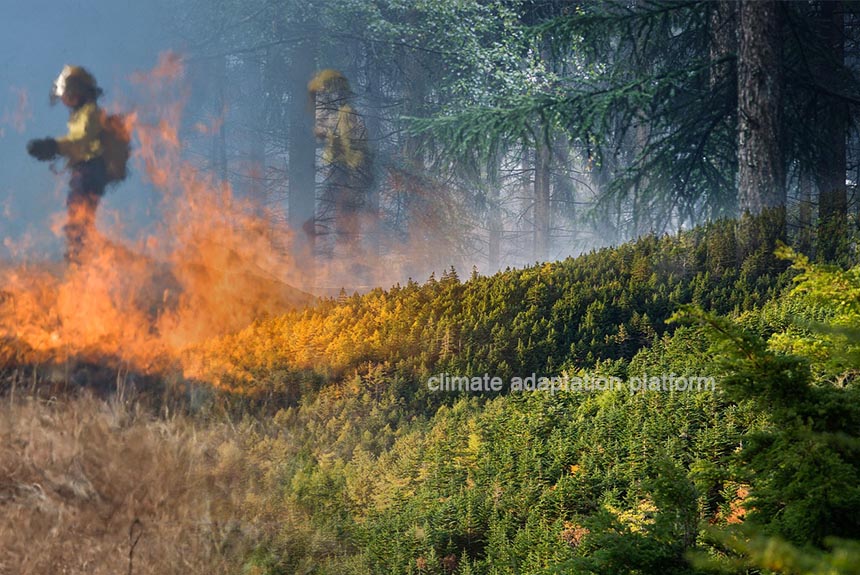The United States has 154 national forests encompassing nearly 300,000 square miles of forests, woodlands, shrublands, wetlands, meadows, and prairies. These forests support animal and plant life and human communities that depend on them for cultural and spiritual significance, natural resources, and overall well-being.
Healthy forests are critical in mitigating climate change, acting as carbon sinks and absorbing billions of metric tonnes of CO2 annually. However, they face imminent threats from extreme wildfires, pathogen and insect outbreaks, heat stress, drought, rapid development, and invasive species exacerbated by climate change.
President Biden signed Executive Order 14072, “Strengthening the Nation’s Forests, Communities, and Local Economies,” in response to climate change and trends in forest decline. This order calls for conserving and safeguarding old and mature forests and recommends incorporating Indigenous Knowledge and practice in public land management.
A team of 40 intercultural, interdisciplinary Indigenous and Western scholars and practitioners, led by Dr Cristina Eisenberg (Oregon State University), Dr Susan Prichard (University of Washington), Dr Michael Paul Nelson (Oregon State University), and Dr Paul Hessburg (USFS Pacific Northwest Research Station), worked together to develop a report outlining stewardship methods and recommendations to support climate-adaptive forests.
The report, “Braiding Indigenous and Western Knowledge for Climate-Adapted Forests: An Ecocultural State of Science Report,” published in March 2024, “builds on federal directives to respectfully and intentionally braid Indigenous Knowledge and Western Science knowledge systems in a Two-Eyed-Seeing approach that informs wildfire and climate adaptation strategies to conserve our public forest.”
The report notes that the time-tested practices of Indigenous stewardship that, for millennia, shaped forest structure and species composition have been diminished after European colonisation, when Euro-American colonisers took land from Indigenous Peoples indirectly through the introduction of diseases, and directly through violence, broken treaties, genocide, and forced removal to reservations. Settler colonialism involved either modernising or destroying, or both, Indigenous Peoples and their cultures by force.
To undo colonisation’s adverse consequences, the authors advocated implementing decolonisation in forest management to increase US forest climate and wildfire resilience. Decolonisation entails a paradigm shift in how we think about all forests, not just old and mature forests, and how we re-establish the central role of humans in nature (Braiding Indigenous, 2024).
The report offers five recommendations:
- Adopt proactive stewardship. In historically frequent-fire forests, invest broadly and intentionally in cultural and prescribed burning, forest thinning, and other active forest management at the pace and scale needed to overtake the influence of modern novel wildfires, restore resilience, and reduce reliance on fire suppression and disaster response.
- Recognise and respect Tribal Sovereignty and indigenous knowledge. Establish and support government-to-government co-stewardship partnerships with Tribal Nations at all stages of policy development, planning, monitoring, decision-making, and adaptive stewardship.
- Provide the flexibility to steward dynamic landscapes and navigate uncertainties under rapidly changing conditions. Managing static landscape conditions has been ineffective concerning changing disturbance. Especially under climate change, high-severity fire, drought, and insect disturbances cannot be prevented in areas prioritised for mature and old-growth forest conservation. All landscapes, even designated reserves, are dynamic.
- Ground agency planning and land and resource stewardship policies in ethics of reciprocity and responsibility to many future human generations. Through active reciprocal stewardship, people benefit from and provide for the ecosystems that support them for generations.
- Catalyze innovative approaches to forest stewardship. Effectively fund adaptive, long-term, forest stewardship, and long-term monitoring at stand-to-landscape scales across all partnerships. Learning what works best as conditions change to inform modification of best practices lies at the heart of adaptive reciprocal stewardship.
The team also publishes a website that includes the Stewardship Map. This interactive map points to real-world examples of place-based stewardship, strategies, and tools for adapting forests to climate change across the US and parts of Canada.
Source:
Braiding Indigenous and Western Knowledge for Climate-Adapted Forests: An Ecocultural State of Science Report. (March 2024). Retrieved from https://depts.washington.edu/flame/mature_forests/pdfs/BraidingSweetgrassReport.pdf
The Wise Path Forward. (2024). Retrieved from https://adaptiveforeststewardship.org/
Urton, J. (2024, April 10). New report ‘braids’ Indigenous and Western knowledge for forest adaptation strategies against climate change. Phys.Org. Retrieved from https://phys.org/news/2024-04-braids-indigenous-western-knowledge-forest.html



Leave a Reply